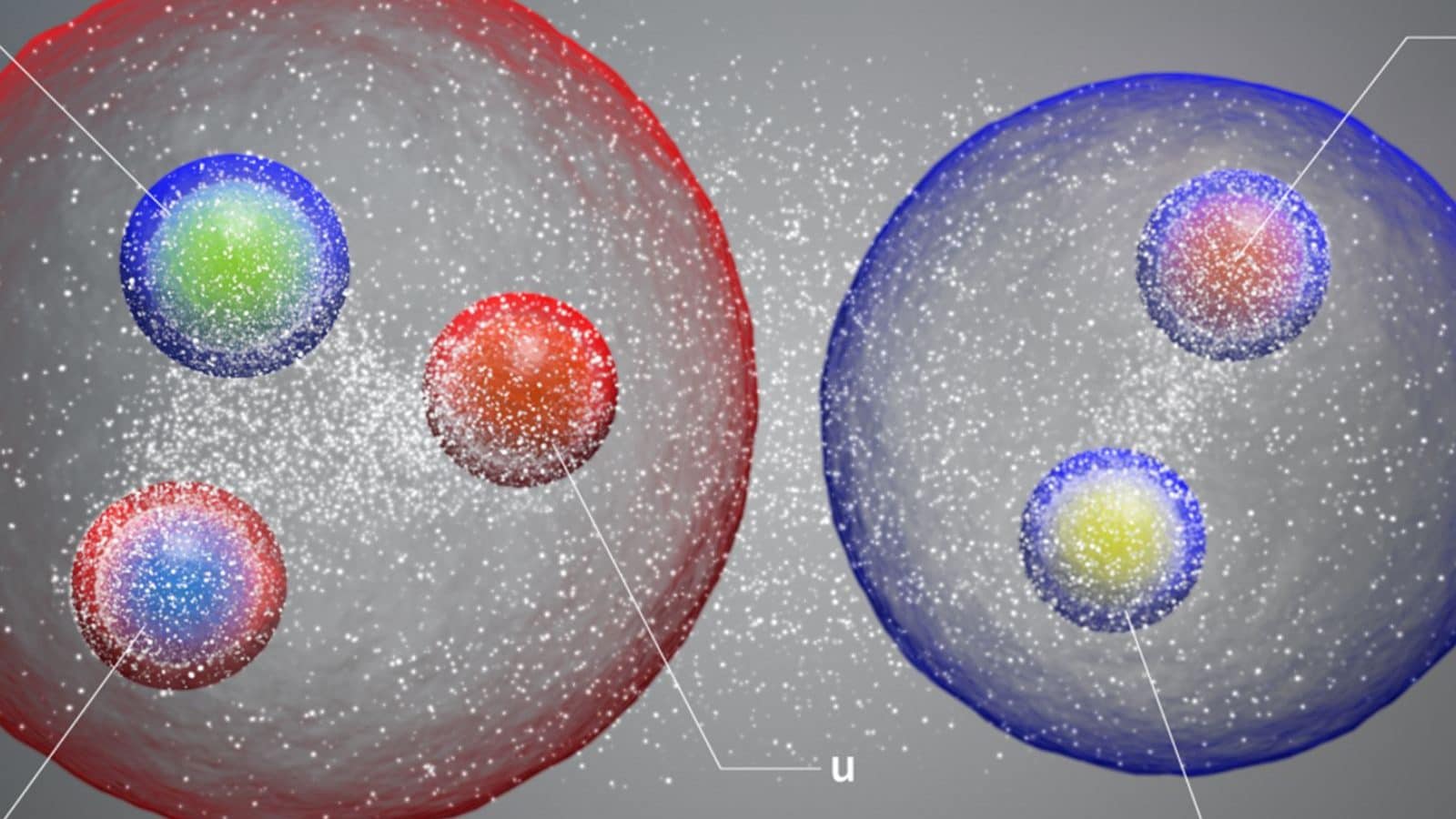
The new pentaquark, shown here as a pair of standard hadrons loosely connected in a molecule-like structure. (Image: Courtesy of CERN)
Scientists said they observed a new type of “pentaquark” and the first-ever pair of “tetraquarks,” which will help physicists better understand how quarks combine into composite particles
- Reuters GENEVA
- Last updated:July 6, 2022 12:08 am IST
- FOLLOW US ON:
Scientists working with the Large Hadron Collider (LHC) have discovered three never-before-seen subatomic particles as they work to decipher the building blocks of the universe, Europe’s nuclear research center CERN said on Tuesday.
The 27 km long LHC at CERN is the machine that found the Higgs boson which, together with its associated energy field, is believed to be crucial in the formation of the universe after the Big Bang 13.7 billion years ago is.
Now scientists at CERN say they’ve observed a new type of “pentaquarks” and the first-ever pair of “tetraquarks,” adding three members to the list of new hadrons found at the LHC. They will help physicists better understand how quarks combine to form composite particles.
Quarks are elementary particles that usually combine in groups of two or three to form hadrons like the protons and neutrons of the atomic nucleus. More rarely, however, they can also combine to form four-quark and five-quark particles or tetraquarks and pentaquarks.
“The more analyzes we do, the more types of exotic hadrons we find,” physicist Niels Tuning said in a statement. “We are experiencing a discovery phase similar to that in the 1950s, when the discovery of a ‘particle zoo’ of hadrons began, and eventually led to the quark model of conventional hadrons in the 1960s. We are creating the ‘particle zoo 2.0’.”
(Reporting by Michael Shields; Editing by Catherine Evans)











